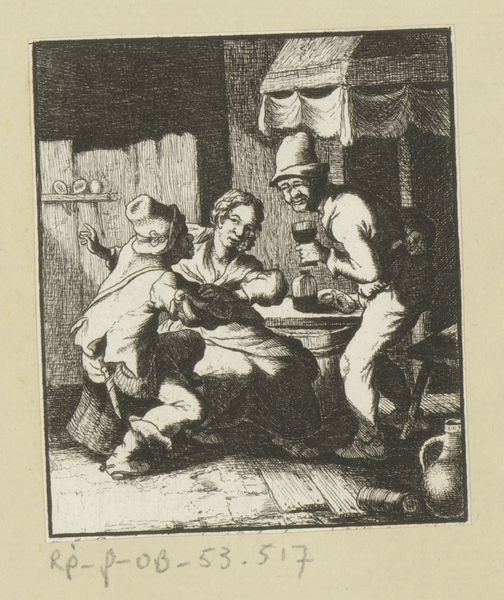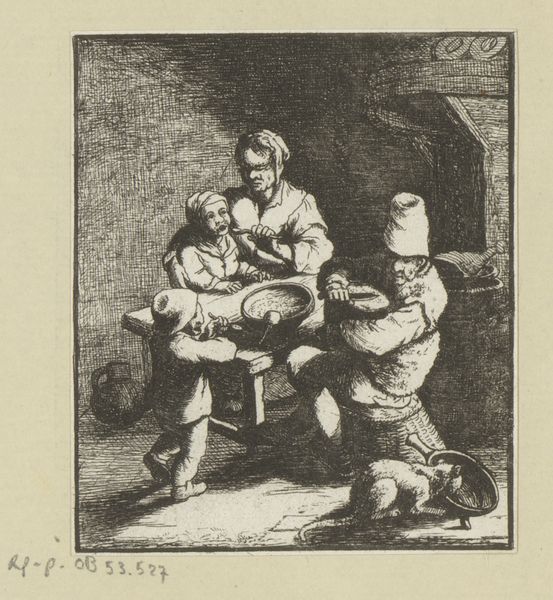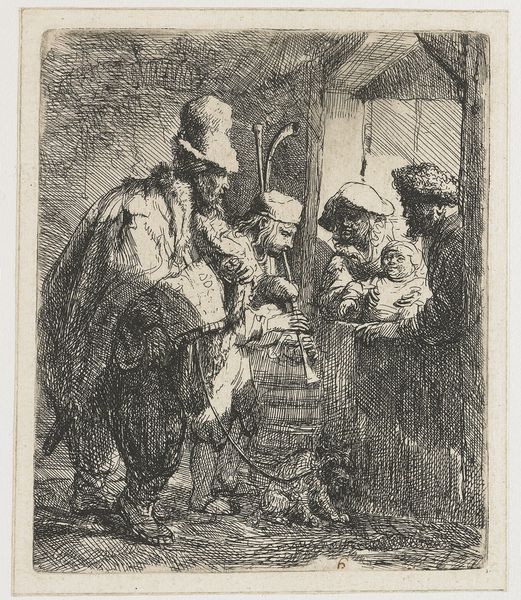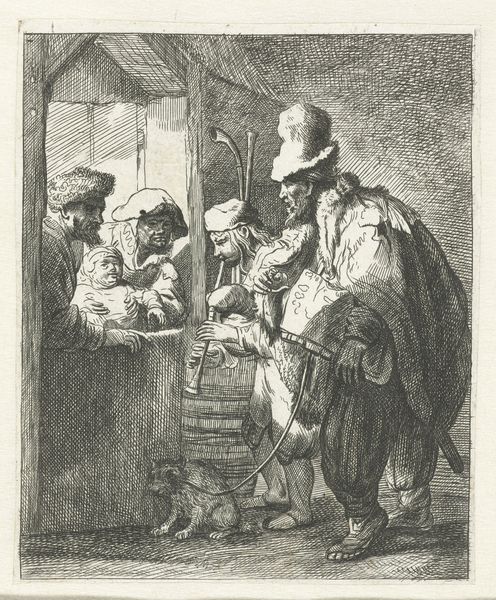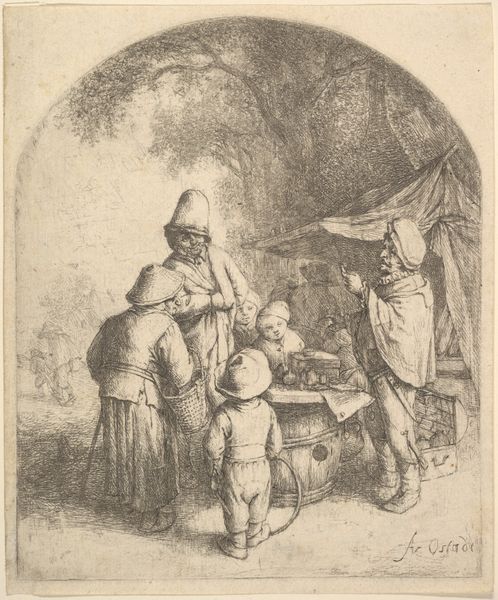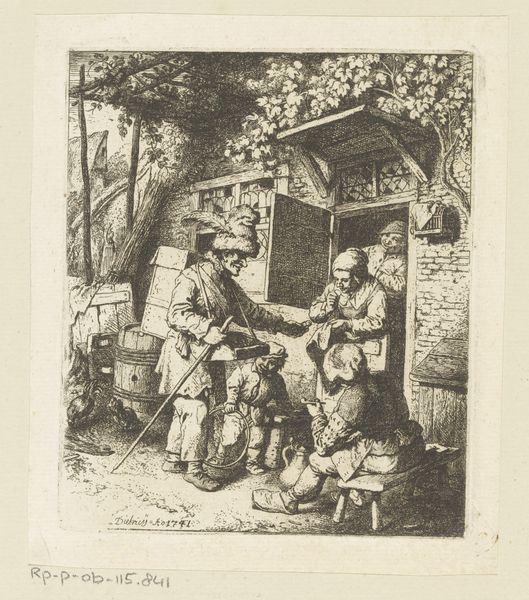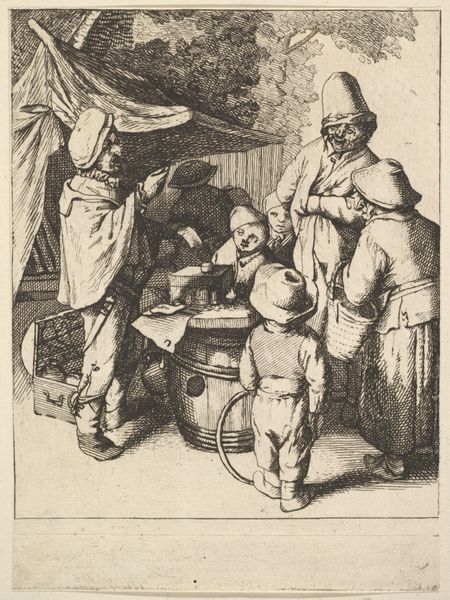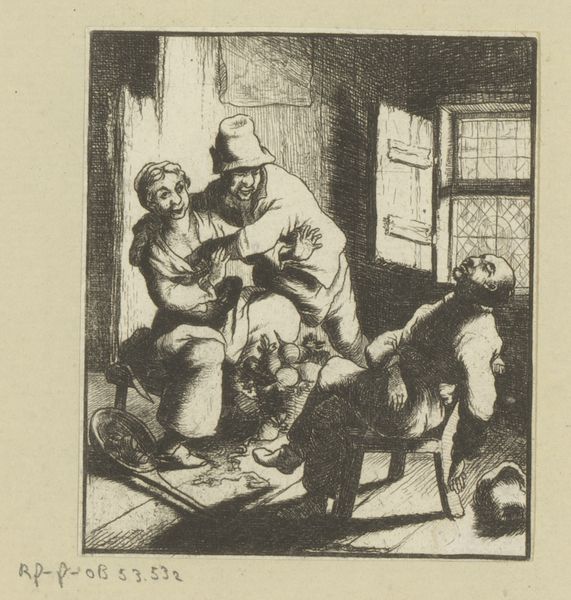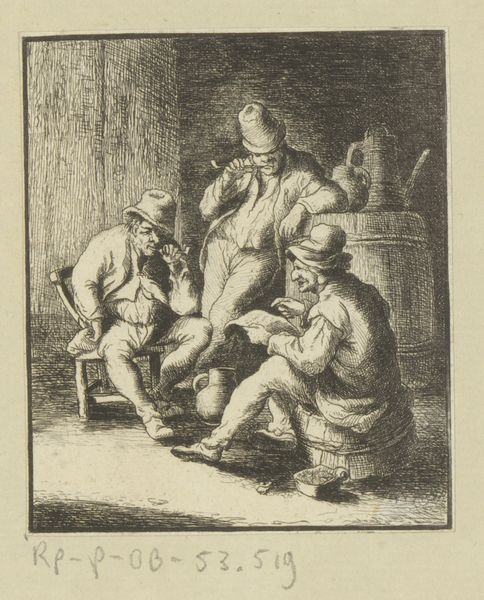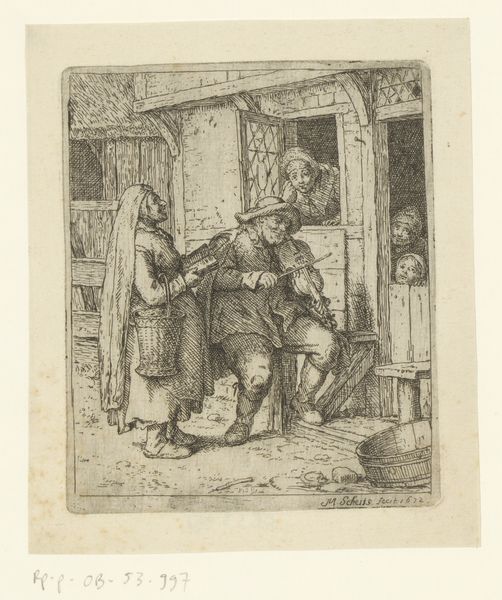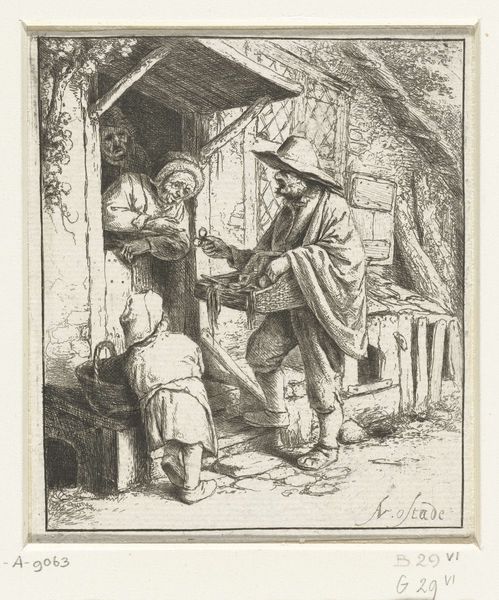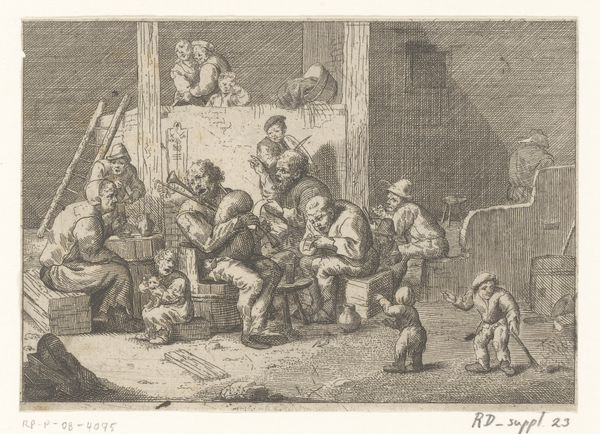
Dimensions: height 94 mm, width 80 mm
Copyright: Rijks Museum: Open Domain
Curator: Johann Andreas Benjamin Nothnagel, working sometime between 1739 and 1804, presents us with "Three Music-Making Men," an engraving rendered in a baroque style with line detailing. Editor: My initial reaction is one of mild claustrophobia. The men are huddled within this dim, confined space, the crosshatching creating a dense, almost suffocating atmosphere. Curator: That spatial compression certainly reinforces the sense of intimacy within the depicted scene. Consider, too, the deployment of line. Note the artist's varied use of cross-hatching. Editor: Indeed. We see an almost obsessive, relentless detail in the lines. But if we pull back from the immediate sense of enclosure, there is still the historical dimension. Images such as this give some insight to performance culture. One can even infer that they are possibly rural players due to their fashion, musical instrument making, and apparent low social positioning, since they have to play indoors rather than a staged location or outside. Curator: Precisely, you’re hitting on one of the interesting semiotic aspects of this piece—the juxtaposition of high and low culture, almost an uncanny joining of these within the same image. This kind of subject matter served what purpose? Note also the composition. What can we interpret of the subjects when one sees a violin being performed at center and a wind pipe near to a wall. What purpose does that serve? Editor: Well, I wonder if there's a degree of romanticization at play. The piece isn't celebrating country folk as much as, through these particular conventions and imagery, reinforcing some kind of rural past. Curator: But beyond its cultural context, Nothnagel's attention to texture and light contributes greatly to its overall effect. Editor: True, the play of light across their faces does add depth to their portrayal, injecting a needed nuance into the picture. Curator: "Three Music-Making Men" operates, perhaps then, on multiple levels, engaging viewers in both its artistic mastery, representation, and historical significance. Editor: Agreed. The work offers a fascinating confluence of visual analysis and social observation.
Comments
No comments
Be the first to comment and join the conversation on the ultimate creative platform.
